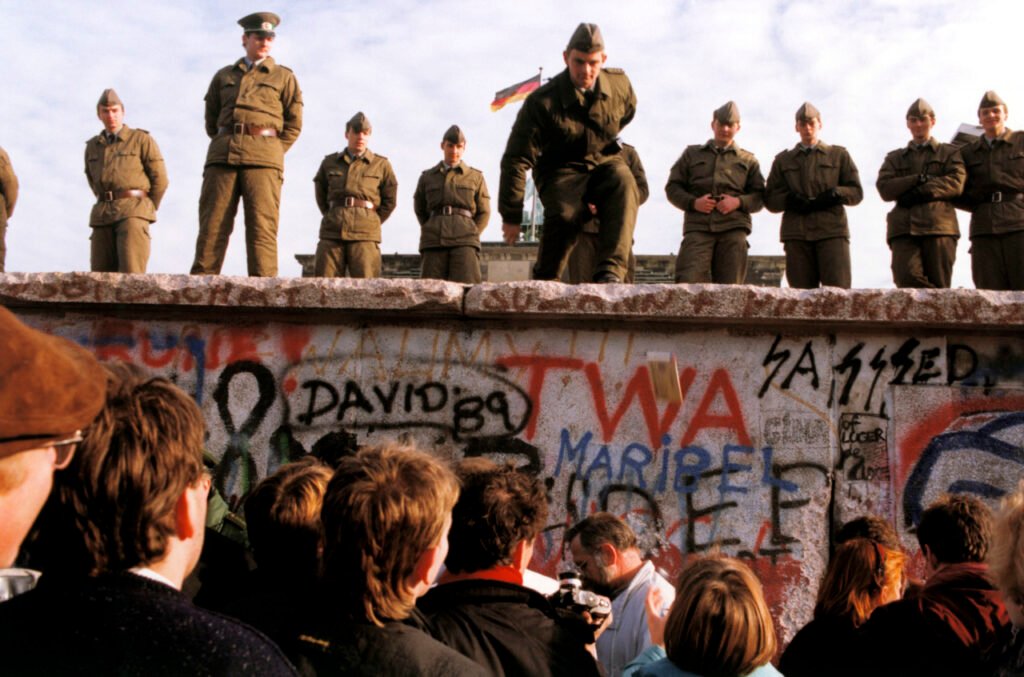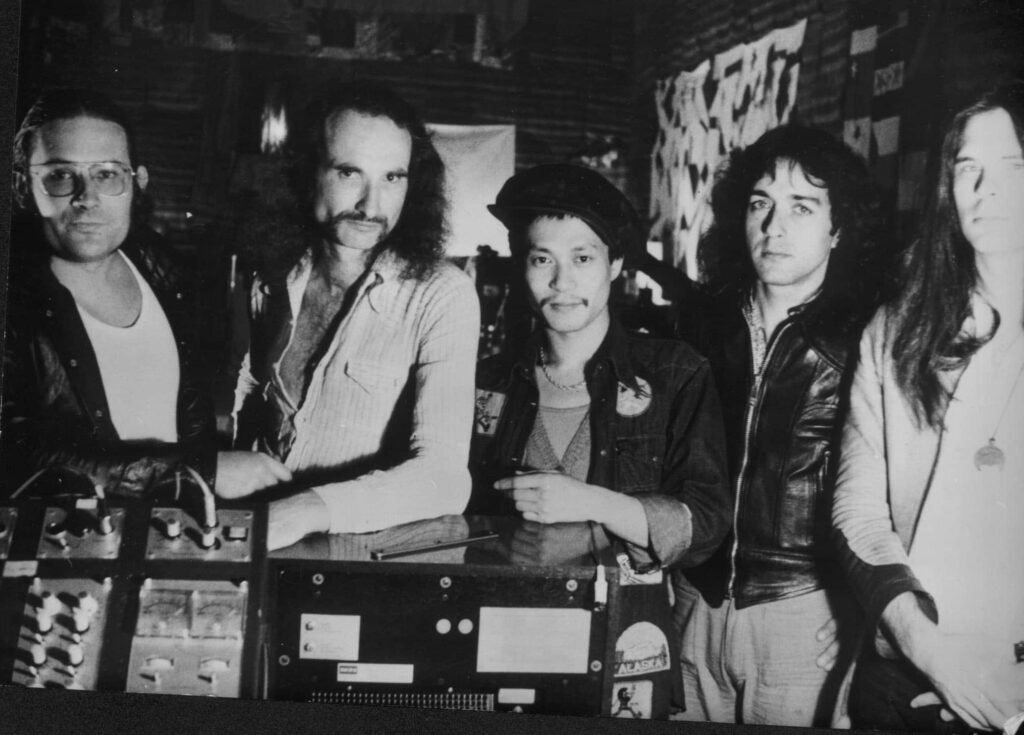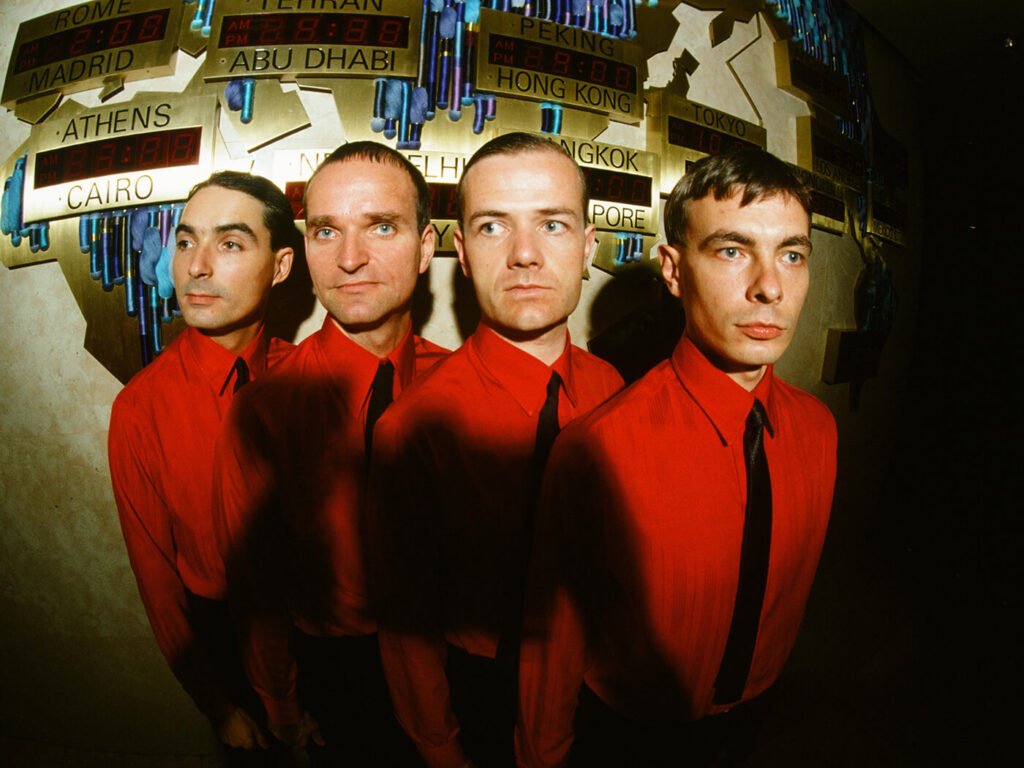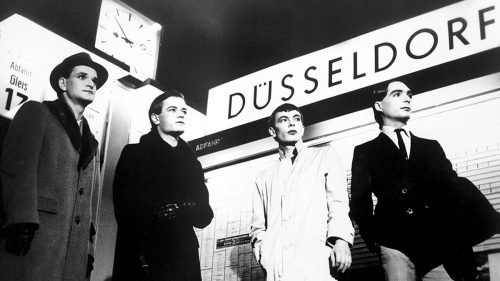In the landscape of rock music, Krautrock stands as a unique and influential genre that emerged from West Germany in the late 1960s and early 1970s. Characterized by its experimental approach, Krautrock blended elements of psychedelic rock, electronic music, and avant-garde sounds, breaking away from traditional rock structures. Bands like Can, Kraftwerk, Neu!, and Amon Düül II pushed the boundaries of music, creating immersive soundscapes that have left a lasting impact on genres ranging from electronic to post-punk and ambient.
The late 60s and early 70s were a period of profound sociopolitical upheaval in West Germany. The country was grappling with its Nazi past while undergoing rapid economic recovery, known as the Wirtschaftswunder or “economic miracle.” This economic boom, however, did not erase the underlying tensions in society. The younger generation, born after World War II, began to question the values and actions of their parents’ generation, leading to a significant cultural and generational divide. The student movement, characterized by its calls for political reform, social justice, and greater personal freedom, reached its peak in 1968, culminating in widespread protests and the rise of radical groups like the Red Army Faction (RAF).
Against this backdrop of political unrest and cultural transformation, Krautrock emerged not just as a musical genre but as a form of expression that encapsulated the rebellious spirit of the time. The genre’s artists sought to create music that was free from the commercial constraints of the mainstream, reflecting their desires for innovation, authenticity, and a break from the past.
The Sociopolitical Landscape of West Germany

In the aftermath of World War II, West Germany embarked on a remarkable journey of recovery and transformation, commonly referred to as the Wirtschaftswunder, or “economic miracle.” This period, spanning the 1950s and 1960s, saw rapid industrial growth, a surge in employment, and significant improvements in living standards. The Marshall Plan, initiated by the United States, provided crucial financial aid that fueled reconstruction efforts and industrial modernization. By the early 1960s, West Germany had become one of the world’s leading economies, symbolizing resilience and rebirth from the ruins of war.
However, the economic prosperity also highlighted a growing societal divide. The older generation, who had lived through the war and its immediate aftermath, often valued stability, hard work, and a conservative approach to life. In contrast, the younger generation, born in the post-war period and reaping the benefits of economic affluence, began to challenge these values. They were more inclined towards questioning authority, seeking personal freedoms, and advocating for social change. This generational rift laid the groundwork for significant cultural and political upheaval.
Student Movement and Political Unrest
The generational divide became a catalyst for the student movement, which gained momentum in the mid-1960s. University students across West Germany started to voice their discontent with the status quo, demanding political and social reforms. They criticized the lingering influence of former Nazis in government positions, the perceived authoritarianism in the education system, and the broader capitalist structures that they believed perpetuated inequality and injustice.
The climax of this unrest came in 1968, a year marked by widespread protests and demonstrations. The assassination attempt on Rudi Dutschke, a prominent student leader, sparked massive demonstrations across the country. The protests reached their zenith with the “Extra-Parliamentary Opposition” (APO) movement, which saw thousands of students, intellectuals, and leftist activists take to the streets.
Amidst this turbulence, more radical elements emerged, leading to the formation of the Red Army Faction (RAF), also known as the Baader-Meinhof Group. Founded by Andreas Baader, Ulrike Meinhof, and others, the RAF engaged in a campaign of violent resistance against what they saw as a repressive state apparatus, further polarizing West German society.
Cultural Shifts and Generational Conflict
The sociopolitical turmoil of the late 60s and early 70s was mirrored by profound cultural shifts. Influenced by the global counterculture movement, American music, fashion, and ideals of freedom and individuality began to permeate West German society. This cultural influx challenged traditional norms and values, fostering a vibrant and often contentious cultural landscape.
The younger generation, inspired by the civil rights movement, anti-Vietnam War protests, and the hippie movement in the United States, began to embrace new forms of expression and lifestyle. Music, art, and literature became arenas for challenging conventional norms and exploring new ideas.
This period also saw the rise of a distinct generational conflict. The older generation, who had endured the hardships of war and reconstruction, often viewed the younger generation’s demands and lifestyle choices with suspicion and disdain. Conversely, the youth saw their parents’ generation as complicit in past atrocities and resistant to necessary change. This conflict was not just political but also deeply cultural, as it involved a fundamental clash over values, beliefs, and visions for the future.
Emergence of Krautrock

Krautrock, a term originally coined by British music journalists, refers to a diverse and experimental genre of rock music that emerged in West Germany in the late 1960s and early 1970s. Characterized by its avant-garde approach, Krautrock diverged significantly from the traditional rock and pop sounds of the time, embracing a blend of psychedelic rock, electronic music, and minimalist influences. The genre is often marked by extended instrumental improvisations, repetitive rhythms, and innovative soundscapes.
Prominent bands that defined and propelled the Krautrock movement include Can, Kraftwerk, Neu!, and Amon Düül II. Each of these bands contributed uniquely to the genre:
- Can: Known for their improvisational style and eclectic influences, Can’s music often featured complex rhythms and a mix of rock, jazz, and electronic elements.
- Kraftwerk: Pioneers of electronic music, Kraftwerk’s use of synthesizers and electronic beats laid the foundation for future genres such as techno and synth-pop.
- Neu!: Celebrated for their “motorik” beat—a steady, pulsating rhythm—Neu! focused on creating hypnotic and minimalist soundscapes.
- Amon Düül II: With their roots in the countercultural commune scene, Amon Düül II combined psychedelic rock with political and social commentary.
Musical Innovation and Experimentation
At the heart of Krautrock was a relentless pursuit of musical innovation. Krautrock artists sought to break free from the constraints of traditional rock music, experimenting with new sounds and structures. This drive for experimentation was fueled by several key factors:
- Use of Electronic Instruments: Krautrock musicians were early adopters of electronic instruments such as synthesizers, sequencers, and drum machines. Bands like Kraftwerk and Tangerine Dream explored the sonic possibilities of these tools, creating otherworldly soundscapes that were unlike anything heard in mainstream rock.
- Unconventional Song Structures: Moving away from the verse-chorus-verse format typical of rock music, Krautrock often featured long, instrumental passages and repetitive motifs. This approach allowed for greater improvisation and a focus on texture and rhythm over melody and lyrics.
- Fusion of Genres: Krautrock bands drew from a wide array of influences, including jazz, classical music, and avant-garde art. This fusion resulted in a genre that was highly eclectic and often unpredictable.
Cultural Shifts
The political climate of West Germany in the late 60s and early 70s played a crucial role in shaping the ethos of Krautrock. The student protests, the rise of radical political groups, and the broader cultural shifts created an environment where young musicians felt compelled to challenge the status quo. Krautrock became a form of cultural resistance, with artists rejecting the commercialism of the music industry and the conservative values of their parents’ generation.
This desire to innovate and break from tradition was not just a reaction to the political environment but also a reflection of a broader quest for authenticity and self-expression. Krautrock artists were determined to carve out a distinct identity, both musically and culturally, that resonated with the spirit of their time. By embracing new technologies, exploring unconventional musical forms, and drawing from a rich tapestry of influences, Krautrock musicians created a genre that was as revolutionary as the era that birthed it.
Thematic and Attitudinal Influences

Krautrock emerged as a bold rejection of mainstream culture and commercialism, driven by a profound desire for authenticity and artistic freedom. The artists within this genre were disillusioned with the formulaic and profit-driven nature of the music industry, which they felt stifled creativity and individuality. Krautrock musicians sought to distance themselves from these constraints, embracing an ethos of experimentation and self-expression.
Bands like Can and Amon Düül II epitomized this rebellion through their unorthodox approach to music production and performance. They often recorded in communal settings, blurring the lines between life and art. This method fostered a collaborative and spontaneous creative process, free from the pressures of commercial success. Their music was characterized by long, improvisational jams, eclectic influences, and an embrace of avant-garde techniques, all of which underscored their commitment to artistic integrity over commercial viability.
Reflections on Technology and Futurism
Krautrock artists were also deeply fascinated by technology and futurism, themes that permeated their music and reflected both optimism and anxiety about the future. This duality was evident in the works of bands like Kraftwerk and Tangerine Dream, who pioneered the use of electronic instruments and explored the relationship between humanity and technology.
Kraftwerk’s 1974 album “Autobahn,” for instance, celebrated the technological advancements of modern Germany through its innovative use of synthesizers and electronic beats. The title track’s repetitive, driving rhythm mimicked the experience of traveling on the autobahn, symbolizing progress and mobility. However, beneath this optimistic veneer lay an undercurrent of unease about the dehumanizing potential of technology, a theme further explored in their later works like “The Man-Machine” (1978).
Similarly, Tangerine Dream’s “Phaedra” (1974) utilized sequencers and synthesizers to create ethereal, otherworldly soundscapes that evoked a sense of cosmic exploration and the unknown. This exploration of the future through music resonated with the broader societal fascination and apprehension about technological advancements and their implications for humanity.
Political and Social Commentary
Krautrock was not only a vehicle for artistic and technological exploration but also a platform for political and social commentary. Many Krautrock artists used their music to address and critique the sociopolitical issues of their time, reflecting the turbulent environment of late 60s and early 70s West Germany.
One notable example is Amon Düül II’s “Phallus Dei” (1969), which combined psychedelic rock with pointed social commentary. The band’s music and lyrics often delved into themes of political radicalism, social justice, and anti-establishment sentiments, mirroring the concerns of the student movement and other progressive groups.
Can’s “Tago Mago” (1971) also exemplifies this blend of musical innovation and political awareness. Tracks like “Oh Yeah” and “Halleluhwah” feature cryptic lyrics and a relentless, driving rhythm that convey a sense of urgency and unrest. The band’s incorporation of diverse musical influences and their experimental approach to composition can be seen as a metaphor for their critique of cultural and political conformity.
Faust, another key player in the Krautrock scene, utilized avant-garde techniques and satirical lyrics to challenge the status quo. Their self-titled debut album, “Faust” (1971), included sound collages, noise, and unconventional song structures that defied commercial expectations and offered a critique of consumer culture and political apathy.
Legacy and Impact

Krautrock’s influence extends far beyond its origins in late 60s and early 70s West Germany, leaving an indelible mark on various music genres. One of the most significant impacts has been on electronic music. Bands like Kraftwerk pioneered the use of synthesizers, sequencers, and drum machines, laying the groundwork for the development of techno, house, and synth-pop. Their minimalist, repetitive beats and electronic soundscapes have inspired countless artists, from the pioneering techno duo of Derrick May and Juan Atkins in Detroit to contemporary electronic musicians like Daft Punk and Aphex Twin.
Post-punk is another genre profoundly shaped by Krautrock. The motorik beat popularized by Neu!—a steady, driving rhythm—became a staple in the post-punk and new wave movements of the late 1970s and early 1980s. Bands like Joy Division, Public Image Ltd., and The Fall drew heavily from Krautrock’s experimental ethos and rhythmic innovations, incorporating them into their own avant-garde approaches to rock music.
Ambient music, too, owes a significant debt to Krautrock. Tangerine Dream’s expansive, atmospheric soundscapes and Cluster’s explorations of ambient textures influenced pioneers of the ambient genre like Brian Eno. Eno, in particular, has frequently cited Krautrock as a major influence on his work, praising its adventurous spirit and innovative use of electronic instruments.
Contemporary artists continue to cite Krautrock as an influence, reflecting its enduring legacy. Bands like Radiohead, Tame Impala, and Stereolab have all acknowledged the impact of Krautrock on their music. Radiohead’s use of electronic elements and unconventional song structures, Tame Impala’s psychedelic explorations, and Stereolab’s blending of electronic and rock elements all bear the unmistakable imprint of Krautrock.
Cultural and Historical Significance
The cultural and historical significance of Krautrock extends beyond its musical innovations. Krautrock emerged during a period of intense sociopolitical change in West Germany, a time marked by economic prosperity, generational conflict, and political unrest. The genre’s rejection of mainstream commercialism and embrace of experimentalism can be seen as a response to the rigid structures and conservative values of post-war German society.
Krautrock artists captured the spirit of rebellion and innovation that defined their era. They sought to create a new cultural identity, distinct from both the wartime legacy of their parents’ generation and the pervasive influence of Anglo-American rock music. By embracing new technologies and exploring unconventional sounds, they forged a path that was both forward-looking and deeply reflective of their contemporary sociopolitical context.
Krautrock’s emphasis on authenticity, artistic freedom, and political and social commentary resonated with the broader cultural shifts occurring in West Germany. The genre’s themes of futurism and technological exploration mirrored the country’s rapid modernization and economic transformation, while its critiques of consumerism and authoritarianism reflected the youth’s dissatisfaction with the status quo.
